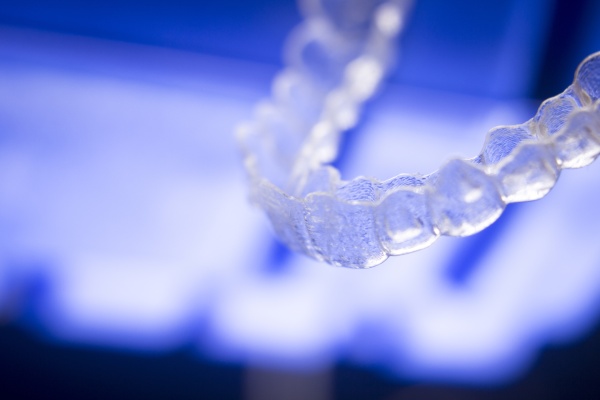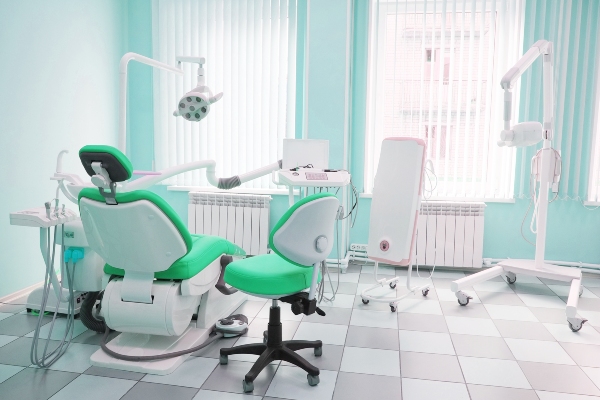Interesting Facts About Invisalign

Approved for use in 1998 by the Food and Drug Administration, Invisalign® is the aesthetic alternative to traditional braces. Made of clear plastic, the aligners are custom-designed to fit inside a patient’s mouth and adjust their smile. With gradual pressure, the aligners shift the teeth into alignment, just like braces, providing the patient with the smile they desire.
What makes Invisalign® unique
Compared to traditional braces, treatment tends to be more comfortable for the wearer and requires fewer dental visits. However, there are other factors that make Invisalign® unique in the world of dentistry.
Aligners are made of custom plastic
While they may appear to be composed of regular plastic, aligners are made of an FDA- approved material called thermoplastic. Known as SmartTrack®, this material was specifically created for these aligners. It is free from chemicals like BPA and BPS, and it does not contain latex or gluten for those patients with allergies. Since the thermoplastic reacts and molds into shape with heat, the aligners should not be placed under hot water when cleaning or caring for them. This could alter the custom fit for the patient’s mouth.
Aligners are different for each patient
Invisalign® has its own 3-D computer program that allows dentists to take accurate images and measurements of a patient’s mouth. Called ClinCheck®, this program allows the doctor to reposition and shift the teeth on display in small increments until the desired adjustment is reached. From this image, the dentist can create custom aligners to fit the patient. As an added benefit, this program gives patients a glimpse of how they will look after their newly adjusted smile.
Nearly constant wear time is required
The aligners should be worn for 20 to 22 hours out of the day to ensure they are moving the teeth into the proper position. The only time they should be removed is when eating or drinking, brushing or flossing and during special circumstances such as contact sports. If they are out of the mouth for an extended period, the aligners will no longer fit into the mouth properly, and the dentist may need to construct new aligners. Before placing them back into the mouth, the teeth should be brushed to decrease bacteria and plaque buildup within the aligner.
Attachments may be added
Traditional braces contain brackets and wires that must be gradually tightened over visits to shift the teeth into position. Although not necessary in all cases, Invisalign® has attachments called SmartForce® that anchor the aligners to the teeth. Just as the wires and brackets help add pressure to shift the teeth, when the aligner is placed over the attachments, they apply the proper amount of force to reposition teeth. The SmartForce® attachments are typically placed on the teeth at the beginning of the treatment, and the doctor will remove them when they are no longer needed for adjustment.
Conclusion
Both adults and youth can benefit from Invisalign® treatment. By providing an opportunity for an improved smile in an invisible manner, the aligners can decrease self-conscious feelings in wearers as they receive necessary dental treatment.
Request an appointment here: https://www.northside-dentalcare.com or call Northside Dental Care, PC at (978) 206-7077 for an appointment in our Peabody office.
Check out what others are saying about our services on Yelp: Read our Yelp reviews.
Recent Posts
Jaw correction can result from a smile makeover. Improper biting and chewing can cause pain and discomfort. These problems can also cause difficulties in speaking. If you want to know how a smile makeover can improve your jaw function, here are the three ways it can do so.This type of smile makeover can handle bite…
When sudden dental issues arise, visiting an emergency dentist is the best course of action for immediate treatment. Ignoring oral pain or trauma can lead to more serious complications, making immediate treatment essential. Whether caused by injury, infection, or a lost restoration, certain dental emergencies require prompt care to relieve discomfort and protect oral health.…
A restorative dentist is also known as a general or family dentist. Their main priority is to help you maintain optimal oral health. Sometimes, this means restoring or replacing damaged or missing teeth.Restorative dentists repair or replace damaged teeth through various methods. Of course, they try to prevent the need for extensive procedures or the…
A broken tooth can affect both oral health and confidence. Whether caused by biting into something hard, an accident, or underlying decay, prompt dental care is essential to prevent further damage and restore normal function. Fortunately, modern dentistry provides several reliable treatments that repair structural damage and rebuild a natural-looking smile. A cosmetic, family, or…


